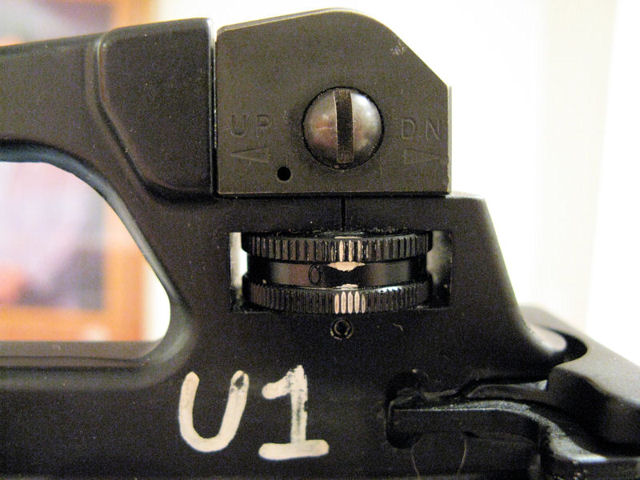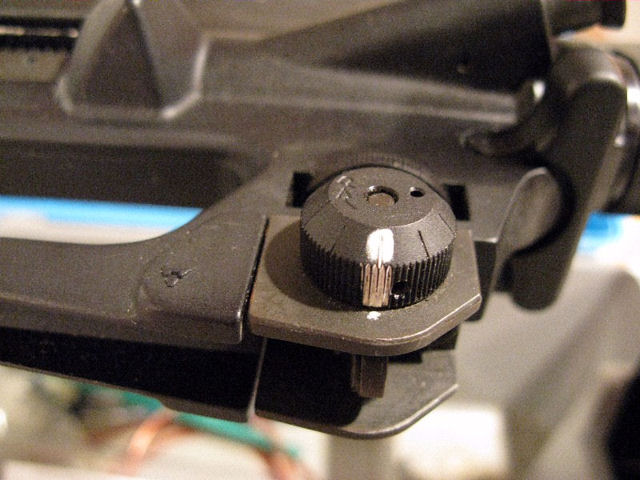Knowing my zeros and marking my sights
A Highpower shooter needs to know his zeros. It doesn't matter what kind of rifle you're shooting, having sight settings for each stage of fire that you can rely on is incredibly important. While service rifle shooters seem to make a bigger deal out of good zeros, match rifle shooters need to know them as well.When I refer to zeros I am talking about the sight settings that I have to put on the gun to shoot a given stage. The sight settings come in two forms. An elevation zero and a windage zero. Before each stage of fire I will check my data book and confirm what each of these numbers are for that stage. Then, I will put that on the rifle.
This is how I obtain and use my zeros.
First, I mark my sights. This step is only necessary once for each upper receiver that I shoot. I take the elevation wheel and run it all the way to the last full click on the bottom. Taking a white paint pen, I make a mark on the elevation wheel on the left side of the receiver. I then twist the windage knob so that the rear sight base is approximately in the center of its travel. Another paint mark is made at the top of the windage knob. At the start of each season I may retouch the paint marks since they fade a little over time.

Elevation wheel at bottom

Windage Knob at painted zero
These markings now provide me with a reference point for each axis of movement. When the knobs are turned, they are turned a certain number of clicks away from these reference points. This difference from reference is my shooting zero.
With the knobs marked I can now begin shooting. This is a trial and error process. I will shoot a shot (or a string for rapid fire) in a given position and note my call. I will compare my call with the shot spotter location. If the two differ, an adjustment to the sights is made. The goal is to have the shot spotter come up at the same location as my call.
Once that stage is complete I should have a beginning zero. That zero will consist of a certain number of clicks of elevation from the bottom paint mark and a number of clicks to the left or right of the windage knob mark. For example, my zero for 200 yard rapid fire may be +11/4L. That means this stage would require the elevation to be brought up 11 clicks from the bottom and the windage to be 4 clicks left of the paint mark.
I consider each stage's zero to be unique and unrelated to any other stage. For example, even though standing and sitting are both shot at 200 yards, the sight setting for these two stages may or may not be different from each other. Either way, I don't care. I just want an elevation and windage zero for each of them.
Each stage's elevation is counted from the bottom. This is made easier knowing that one revolution of the elevation wheel is 25 clicks. Since the 600 yard slow prone setting may be 60 clicks up it is very handy to just turn the knob quickly two revolutions and then count up 10 clicks from that. This avoids any second guessing that I may have to do if I counted each click individually.
Over time my zeros can and do change. This is kept track of in my data book so that every time I step up to the firing line I put on the rifle the zeros that I feel will net me the most shots in the middle if I point the rifle there.